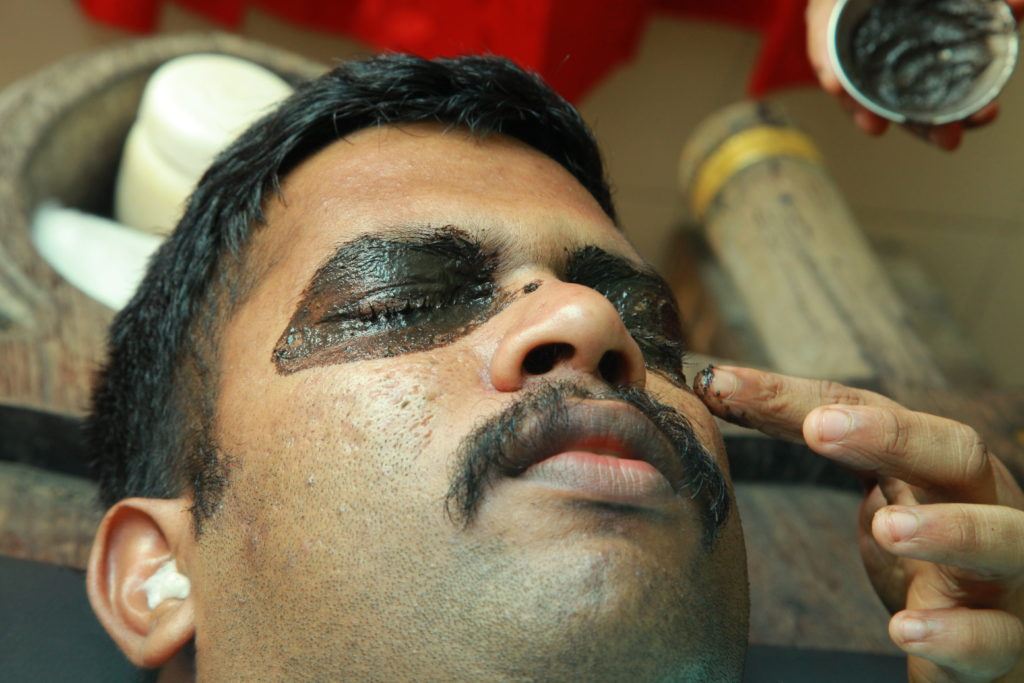Netra Bhaisajya Kalpana – Treatments for Eye Diseases

Ayurveda is one of the oldest scientific medical systems. It is not only a system of medicine in the conventional sense of curing disease but also a way of life that teaches us how to maintain & protect health.
Eyes are the most precious God’s gift to human being. Our eyes are the important organ in urdhwajatrugata sthana. Urdwajatrugata vyadhis includes the diseases of eyes, ear, nose & throat.
In Ayurvedic samhitas local treatment for netraroga has been described in the name of kriyakalpa. Kriyakalpa is the main therapeutic process for netra rogas. Kriyakalpa means the procedures in which various drugs are applied in & around the eye ball as a treatment modality. Tarpanadi procedures are included in kriyakalpas.
The word kriyakalpa is made up of two words. kriya means therapeutic procedures useful for curing diseases & kalpa means practical. It includes selection of drug for specific procedure, preparation of special drug & finally its application. Eyes are the only organ in the body which receives separate treatment modality like Kriyakalpa as a Bahyaparimarjan Chikitsa & no other organ individually receives the treatment
According to Sushruta:
According to Sushruta there are five types of Kriyakalpa –
1) Tarpana
2) Putapaka
3) Ashchyotana
4) Parisheka
5) Anjana
According to Sharangadhara :
Acharya Sharangadhara has described the treatment of eye
diseases under the heading of Kalpa. He has described seven types of
Kalpa as :
1) Tarpana
2) Putapaka
3) Ashchyotana
4) Parisheka
5) Anjana
6) Pindi
7) Bidalaka
Tarpana- In this process the oily (ghee) substance is kept in eye for a specific time by special arrangement. Simple ghee or oil is used as medicine which is the form of suspension. So its particles do not leave the eye and contact time is more and more drugs are absorbed. It will cross corneal epithelium barrier easily due to its lipophilic property.
Putpaka- Procdure is same as tarpana but medicine preparation is Swarasa extracted by put paka vidhi. Contact time is same as tarpana but absorption is more than tarpana because it is a suspension of fat and water soluble contents so having both lipophilic and hydrophilic property to penetrate cornea.
Seka- In this process “medicine is poured on closed eye (on eye lids) continuously from four inches height fir a specific time according to dosha” so the medicine is absorbed through skin of lids.
Aschyotana- The medicated drops are put into eye from the height of two inches on open eye. Decoctions of raw drugs are used as medicine so its tissue contact time is very less and it get diluted with tears and drains in to NLD.
Anjana- In this application of medicine to the internal surface of lid margin from kaneenika sandi to apanga sandi with the anjana saalaka. So its bioavailability is more due to more tissue contact time.
Pindi- Medicated paste is kept in a fresh thin cloth applied on eye is named as pindi. Medicine is absorbed through skin of lid and due to heat of poultice local temperature is increased resulting in local vasodilatation.
Vidalaka- In this process medicated paste is applied to eye lids (externally except at eye lashes).medicine is also absorbed through skin as in pindi and seka. Mechanical effect of pressure helps in reducing IOP by vasodilatation and aqueous drainage.
According to the thickness of paste-
Uttama lepana – 1 anguli thickness
Madyama lepana – 1/3 anguli thickness
Hina lepana – ¼ anguli thickness
Pavithra Perera – 4th year
Gampaha wikkramarachchi university of indiginous medicine.
Faculty of indiginous medicine.



